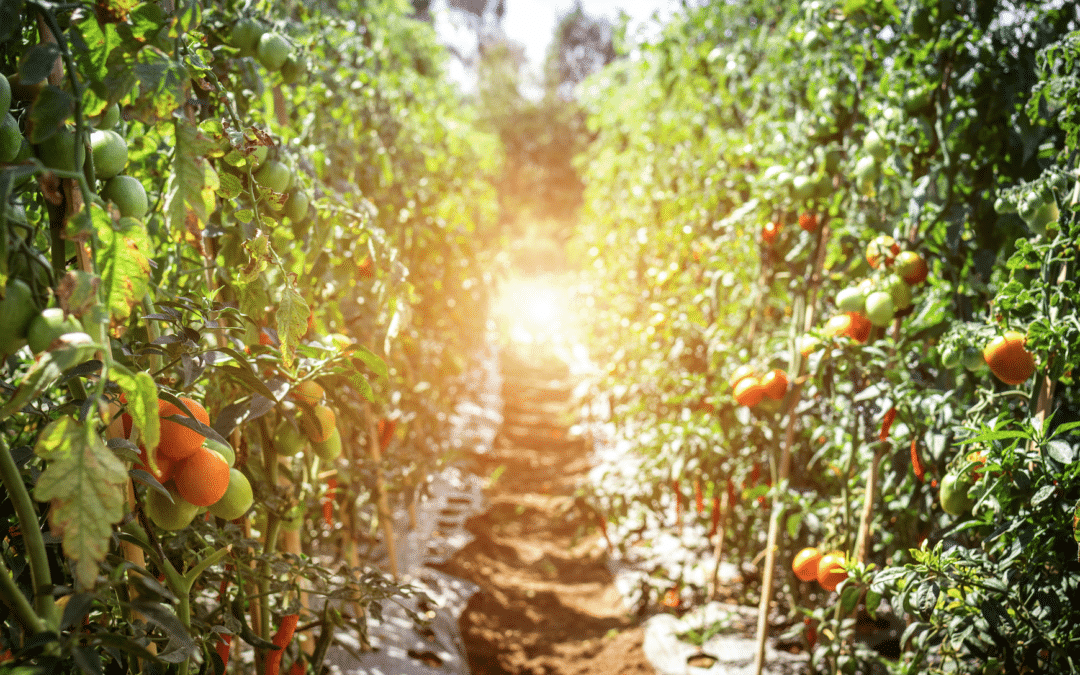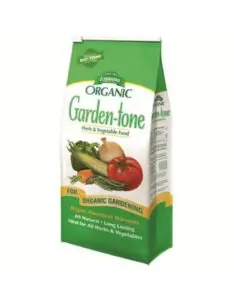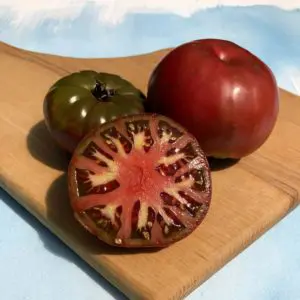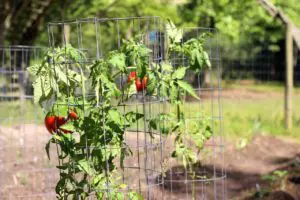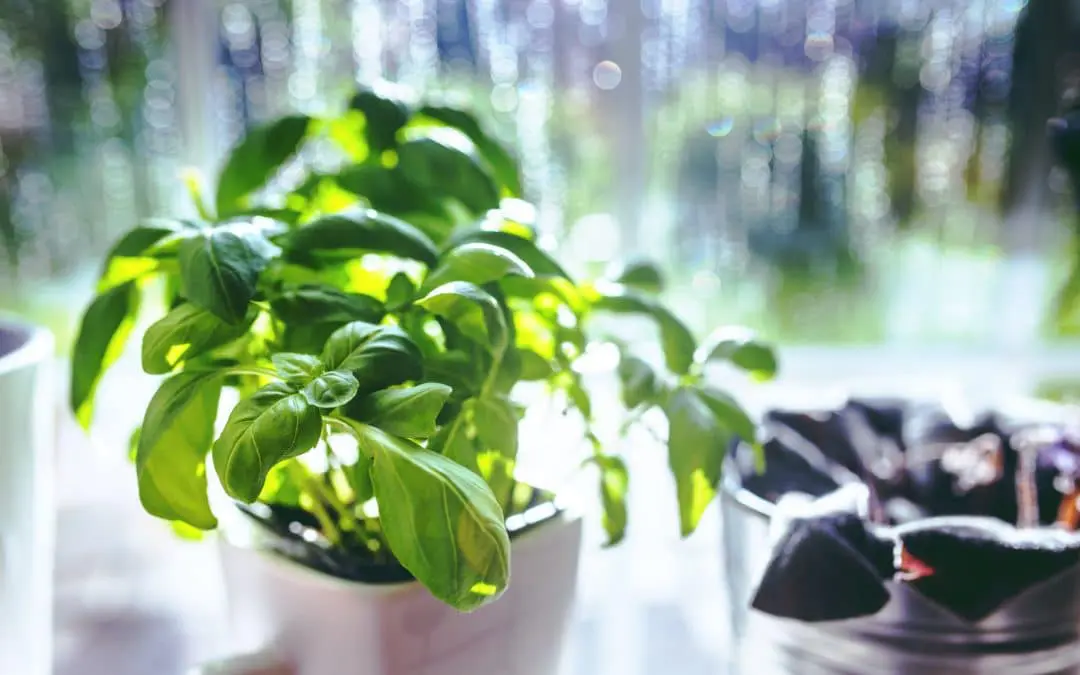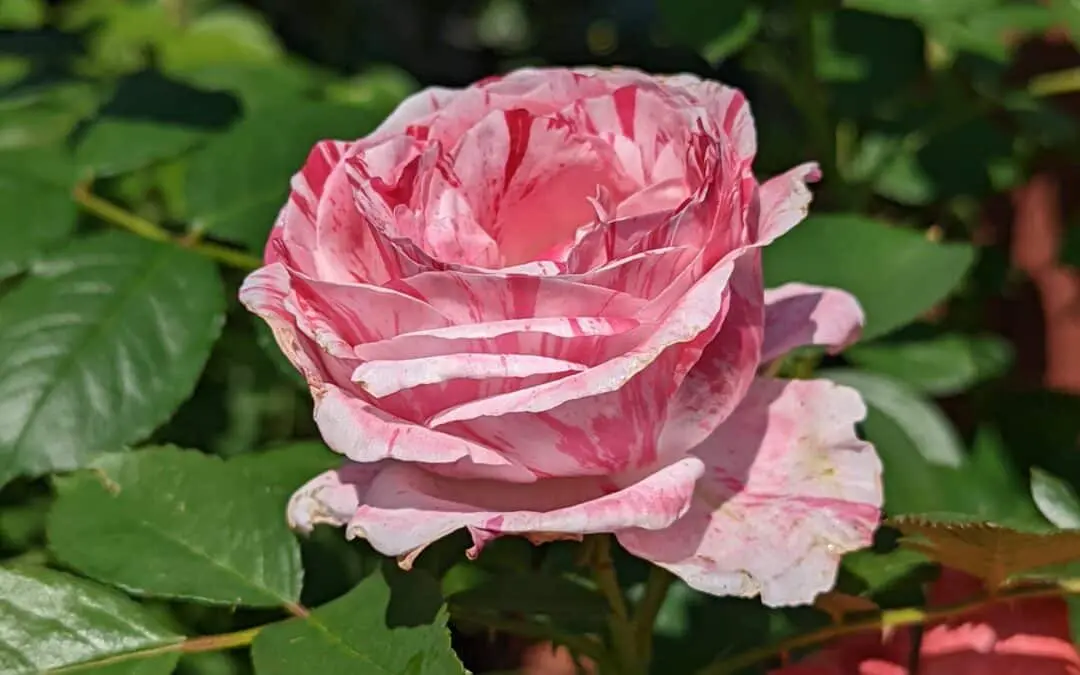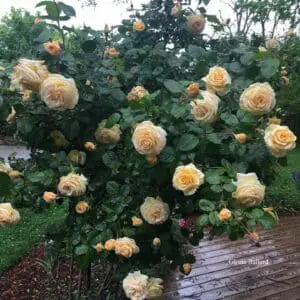
by Gloria Ballard | Jun 2, 2023
If spring is about the garden outside, summer’s heat and humidity may drive you back indoors, where you can still experience nature among the houseplants. But which plants to choose? Here’s what to consider when you’re trying to choose the right houseplant for your home & browsing the greenhouse to find new plants:
- All plants need at least a minimal amount of ongoing care, so a first step is to know what you can provide — and what you can’t. Light, for instance: All houseplants need it, but in varying degrees. If you live in a place that has little natural light coming in during the day, for instance, or can’t provide necessary artificial light, it’s best to choose houseplants that thrive in low-light conditions.
- If you’re that person who says they kill everything they try to grow, you’ll want something that’s fairly low-maintenance. On the other hand, if you usually have success with houseplants and you’re up for a challenge or want to up your game, try something that is, admittedly, a bit finicky.
- If you live with fur friends, know that some houseplants are toxic to dogs and cats, so do your research before you bring home something that might harm them if they decide to taste it.
- What’s your decorating style? Do you thrive in a place with greenery that grows wild and free? Or do you prefer something more tidy and compact? Do you want your plant to have flowers, or are varying shades of green enough?
What works for you? Houseplant varieties are endless, but here are a dozen ideas to get you started on choosing the right houseplant for your home. For low light rooms: – Chinese evergreen, with delicately arched, sometimes variegated leaves – Some of the many varieties of Philodendron, from the familiar heart-leaf green vine to more unusual and colorful foliage. – Peace lily, with glossy green foliage and, occasionally, creamy white flower spathes. Low-maintenance lovelies: -The low-light plants mentioned above are also fairly low-maintenance, but you also can never go wrong with slow-growing Zamioculcas zamiifolia — ZZ plant — with waxy, oval leaves on tall stems; – Sanseveria, or snake plant, including the more unusual varieties, such as a spiky, cylindrical variety or the striking broad-leaf whale-fin sanseveria. – Air plants (Tillandsia) are – seriously – about the lowest-maintenance houseplant you can imagine. They don’t grow in soil, and will survive for a long time if they’re misted or dunked in water every couple of weeks. Pet friendly houseplants: The ASPCA gives a thumbs-up to any of these popular houseplants that are safe if curious pups or kitties take a nibble: – Parlor palms, which have airy, delicate foliage and come in a variety of sizes. Some prefer bright light; others tolerate lower-light conditions. – Spider plant, with its crown of narrow leaves that produce long stems with miniature plantlets on the ends, is a standout in a room that gets bright light. – African violet’s downy leaves and sweet flowers add a spot of color in a room that gets bright, indirect light. Bonus, they thrive under fluorescent lights, as well. Ready to up your houseplant game? – Zebra plant has dark green foliage with bold white veins and can be described as “temperamental,” but a great conversation piece among your plant-savvy friends. – Monstera can make a big statement in your houseplant collection (meaning: if you have a large space, this is the plant that can fill it). The large, dramatic leaves love moderate to bright light. – Pilea is an easy houseplant to grow, but with its striking shadings or deeply textured foliage, it can be a show piece in your collection. Come in and browse the Garden Center at Gardens of Babylon to find the plants that are perfect for your indoor garden.

by Gloria Ballard | May 18, 2023
Local tomatoes: Grow your own!
Ask a gardener what she grows in the kitchen garden, and the first thing she likely mentions is tomatoes. If you enjoy this nutrition-rich vegetable (technically, a fruit), nothing is better than a ripe tomato plucked from the vine in your own back yard.

What tomatoes need to grow
Tomatoes have a reputation for being finicky, but backyard gardeners have success growing them in the ground and in raised beds, and many varieties grow well in containers on the deck or patio. They do need plenty of sunlight – the most successful plants grow in at least six hours of direct sun.

In the ground or in raised beds, work the soil to a fine texture at least six inches deep. A fertilizer especially made for vegetables (such as Espoma Organic Garden-Tone or Tomato-Tone), worked into the soil at planting time, will help provide necessary nutrients.
Choose your tomatoes
Tomato plants are either determinate or indeterminate. Determinate varieties grow to a shorter height and set fruit that ripens over a few weeks, with short harvest intervals. ‘Bradley,’ ‘Roma,’ and other “paste” varieties are determinate. Most of the juicier varieties, such as ‘Better Boy,’ ‘Cherokee Purple,’ Mortgage Lifter’ and many smaller varieties such as ‘Chocolate Cherry’ are indeterminate, which grow taller and produce fruit throughout the summer until the plants are killed by frost.

Which type you choose depends on how you plan to enjoy them. For making sauce or paste, select a determinate variety, which will yield sizable harvests of sturdy tomatoes all at once. For the very best BLT sandwiches all summer, choose a big, juicy variety like ‘Big Boy’ or ‘Beefmaster.’
Planting tomato transplants
After the danger of frost is past, plant tomato transplants deep enough to completely cover the root ball. Transplants that have grown tall and leggy can be planted even deeper, which allows the plant to develop roots along the buried stem. Leave enough space between plants – 18 to 24 inches – for them to grow and spread. Indeterminate varieties will need to be staked or supported in cages to keep the plants and their fruit off the ground, and it’s best to install those at planting time to avoid damaging the plant’s roots later.

Water the transplants at planting time, and plan to provide ½ inch to ¾ inch of water to the root zone twice a week if it doesn’t rain. Mulch that covers the ground around the plants helps retain moisture in the soil and suppresses the growth of weeds in the garden bed. As the plant grows, you may want to remove suckers – secondary shoots that grow in the joint between a branch and the stem – to reduce the overall sprawl of the plant.
Tomato-growing pains
One of the most common problems with ripening tomatoes is a disease called blossom-end rot, which causes a dark, leathery patch to spread on the bottom – where the tomato formed from the flower – of each tomato. The cause is an inadequate level of calcium in the fruit, which gets its nutrients from the soil.
The best advice is to have the soil tested before you plant a garden, which will allow you to know the soil’s pH level and whether you need to add garden lime (calcium carbonate) to the soil. Lime raises the soil’s pH, the measure of acidity or alkalinity from 0 – 14, with 7 being pH- neutral. A pH number below 7 is considered acid soil; above is alkaline. Tomatoes grow best in soil of pH 6.1 or above. Maintaining uniform soil moisture helps plants take up the calcium dissolved in soil.
Harvest the fruit when it begins to turn from green to red. They will ripen further after they are picked, and you can soon enjoy the rich summer flavor of those home-grown tomatoes.

by Gloria Ballard | May 18, 2023
Plant a garden that attracts pollinators
If not for butterflies, wasps, all types of bees and other nectar-sipping, pollen-spreading creatures, we would not have the good food and beautiful flowers we reap from our gardens. Their role is to move grains of pollen from the male part of a flower to the female part, thereby kicking off the next generation of fruits, seeds and young plants. So bring on the pollinators!
Plants that attract pollinators
To set your garden in motion with flying, fluttering and crawling pollinators, plant what they need to live. Flowers provide food in the form of nectar for the insects and hummingbirds. Other plants act as host plants for the larvae of butterflies and other pollinators. Here are a few garden favorites that will bring pollinators to your garden.
* Butterfly weed: Its bright flowers attract hummingbirds, bees, and – of course — butterflies. Grows in full sun and blooms in summer.
* Sunflowers, zinnias: Bees, wasps and butterflies are all drawn to these summer favorite annuals. They grow best in full sun but can tolerate partial sun.
* Bee balm: It’s called this because it attracts bees, of course, but butterflies also sip its sweet nectar. Bee balm grows in sun to partial shade and blooms in summer.
* Trumpet honeysuckle: This vine is favored by hummingbirds, who dip their long beaks in the red-orange, trumpet-shaped flowers in spring and summer. They grow and bloom in sunny and partially shady gardens.
* Columbine: These spring blooming perennials in a variety of shades attract bees and hummingbirds to the garden. They grow in partial shade to sun, and bloom in spring.
* Service berry: This large shrub or small tree blooms with white flowers that attract bees, flies and other pollinators early in the spring. Plant it in sun to partial shade.
* Parsley, dill, fennel: These herbs are all host plants for butterfly larvae – caterpillars – that feed on the foliage. Plant enough to use and to share with the future pollinators.
What else do pollinators need?
Aside from sources of nectar and foliage, you can invite pollinators to the garden by providing other habitat “amenities.”
* Water is essential to pollinators. Include fountains, birdbaths, sprinklers or other water features in your garden plans.
* Places to nest and to roost help pollinators feel at home. A variety of trees and understory plants provides plenty of choices for a variety of creatures. Bees and insects also nest in leaf litter and dead wood.
*A variety of plants attracts a variety of pollinating insects. Plant flowers of different colors, fragrances and blooming times to attract different species throughout the season.
* Avoid pesticides, which can be deadly and will undo efforts to attract the beneficial pollinators to the garden.
https://www.pollinator.org/

by Gloria Ballard | May 6, 2023
New to gardening? Start with herbs
This may be the spring you get serious about planting a kitchen garden. But where to start? Beginning gardeners often find that culinary herbs are a good way to dip a toe into the soil. They are easy to grow, most are forgiving of beginner mistakes, and you can use them to flavor meals now and preserve some for use after summer ends.
Here are five easy-to-grow, almost fool-proof favorites for the garden. They can also grow in containers on a sunny deck, porch or balcony. Most of these are perennials, which will remain in your garden for several years.
Basil
Needs: Warmth, sun, well-drained soil. Water regularly.
Varieties: Sweet basil is the most well-known and most often used for cooking, but there are different varieties with distinctive colors and flavors, including, lemon basil, Thai basil and others.
Use in: Pasta sauces and salads, with mild cheeses, in rice dishes, and to make pesto.
Note: Basil is very tender and will be killed by cold temperatures, so plant it after the temperature is consistently warm. Basil is an annual, but if you let it flower and go to seed in the fall, the seeds will drop to the ground and may sprout next year when the ground warms. At the end of the season, make basil pesto and freeze it in small batches to use in cooking throughout fall and winter.
Chives
Needs: Well-drained soil in a sunny location; water regularly.
Varieties: Garlic, onion and Chinese chives are all easy to grow. Garlic and onion chives have tubular leaves; Chinese broadleaf chives’ leaves are flatter. All are mild-flavored members of the onion family.
Use in: Eggs, salads, soups, potatoes, broiled meat or fish. Chinese broadleaf chives are especially good for stir-fries.
Note: Clip the leaves to use as needed. Cut chives can last in the fridge for a few days; for longer storage, chop them and store them in the freezer. This hardy perennial grows from bulbs, and may need to be dug up and divided every few years.
Rosemary
Needs: Well-drained soil in a sunny location.
Varieties: This is a tender shrub that may be damaged during extended extremely cold periods. Some varieties are hardier than others. ‘Arp’ is a variety that usually does well in Middle Tennessee winters, but most will survive if planted in a protected area.
Use in: Meat, chicken and lamb dishes, fish, casseroles, tomato sauces, egg dishes, vinegars and oils.
Note: Rosemary is evergreen, so you can use fresh leaves all winter if the plant doesn’t succumb to extremely cold weather.
Thyme
Needs: Well-drained soil, but thyme is tolerant of poor soil and dry weather.
Varieties: There are many species and different “flavors,” but English thyme is a popular choice for use in the kitchen.
Use in: Stews, stocks and marinades, stuffing, sauces, herb butters, oils and vinegars.
Note: Some thyme varieties are upright, some have a creeping habit. Trim thyme often to keep it from becoming woody.
Oregano
Needs: Well-drained soil in a sunny location, but will also grow in partial shade.
Varieties: Some species are more flavorful than others, so choose carefully. Italian oregano, a milder-flavored herb, is a good choice. Greek oregano has a stronger flavor.
Use in: pizza, meat, tomato dishes, vegetables, oils and vinegars.
Note: Pick the leaves whenever you want to use them for cooking. They can also be dried or frozen, so if you plan to preserve them, harvest the leaves right before the plant blooms, when the flavor is more concentrated.

by Gloria Ballard | May 1, 2023
At Christmas a few years ago, we bought a rose bush to commemorate a special family member who had died that year. It’s a variety called ‘Sunshine Daydream,’ and each mid-spring it fills an area beside our backyard deck with beautiful yellow blooms that do, in fact, invite anyone passing by to stop and smell the roses.
Full disclosure here: I am not an expert on roses. In fact, because my landscape is rich with large shade trees and roses need a lot of sun, I have resisted trying to grow them. This one rose bush is planted in what I believe must be the sunniest spot on the entire property.
But because I want this rose to thrive, I turn to my trusted sources to learn about its care, feeding and pruning. Here’s what the say about growing roses in your landscape:
First, know your rose
There is a wide range of types of roses – climbers, hybrid teas, grandifloras, floribundas; drift roses that can be groundcovers, shrub roses that may be grown in masses, miniatures that can grow in containers.
The climbing roses can be stunning as they frame a doorway or cover a trellis; groundcover roses can tumble down a bank or sloped yard; hybrid tea and grandiflora varieties can be the stars of formal cutting gardens.

All need the same basic care: full to part sun (at least six hours of sunshine each day), adequate water, well-drained soil, attention to fertilizing, and proper pruning at the appropriate times for the best production of blooms.
New plants are available as container-grown plants or bare-root roses sold as dormant plants. The best planting time is in spring before the worst of the summer heat arrives.
Planting and feeding roses
Dig the planting bed deeply and fold in compost or other organic matter to improve dense clay or overly sandy soil. Before planting a bare-root rose, let the plant sit in water for a couple of days to freshen the roots and canes. Plant container-grown roses at the level they grew in the nursery pot. Water deeply, and cover the soil with mulch without piling mulch against the stems.

For regular watering, sprinklers may serve double-duty by washing away some of the pests that visit roses – aphids and spider mites, for example – while it soaks the soil, but it also may encourage blackspot, a common disease that affects the plants. Water with sprinklers early in the day to allow the foliage to dry off quickly.
Some roses don’t need regular fertilizer, but many of the repeat blooming varieties benefit from regular feeding and produce more abundant blooms. Stop feeding in late summer, since any new canes that result from vigorous growth could be damaged by early frosts. Dry, slow-release fertilizer made for roses, such as Espoma Rose Tone, is a good choice. Liquid fertilizer may be applied on the ground and also sprayed on the foliage. Always follow package directions for the fertilizer you choose.

As for everyday care: You’ll enjoy your abundance of roses more if you clip off the spent blooms as they begin to fade, and cutting them back to a five-leaf leaf on the cane encourages new growth. Keep the ground clean in the rose bed, because debris left around the rose can play host to insects and disease.
The best time to prune a rose bush to promote strong growth is early in the year, near the end of the dormant season. I prune our ‘Sunshine Daydream’ each year in December or January, before new leaves begin to sprout.
The challenges
A lot of creatures besides the gardener are attracted to rose bushes. Aphids, Japanese beetles, spider mites and thrips are common pests. Encouraging the beneficial insects to come around (or not shooing them away) can help keep the damaging insects at bay. It’s best to avoid using pesticides that kill everything, because they kill the beneficial insects as well. In my landscape, Japanese beetles have become recent but annoying visitors that chew holes in the perfect rose petals and leaves. I keep a bucket of soapy water nearby, and flick the bugs off the rose bush into the bucket whenever I see them.
Roses are also susceptible to powdery mildew and to blackspot. Natural products such as Neem oil can be effective if applied before early, and re-applied throughout the season.
Rose rosette disease is a virus that has begun to affect roses within the past couple of decades, spread by tiny mites that blow in on the wind. Watch for bright red shoots that will grow into distorted canes commonly called witches’ broom. As the virus spreads throughout the plant, it will gradually die back until it is completely dead. You may be able to slow down rose rosette disease by cutting off the bright red sprouts as they appear. Some experts suggest digging up the infected bush and getting rid of it, though, so it won’t spread the disease to other roses in the garden.
https://gardensofbabylon.com/store/rose-tone-4-lb.html
https://gardensofbabylon.com/store/search/neem+oil/
Nashville Rose Society: https://nashvillerosesociety.org/
Southern Living Garden Book: https://southernlivingstore.com



